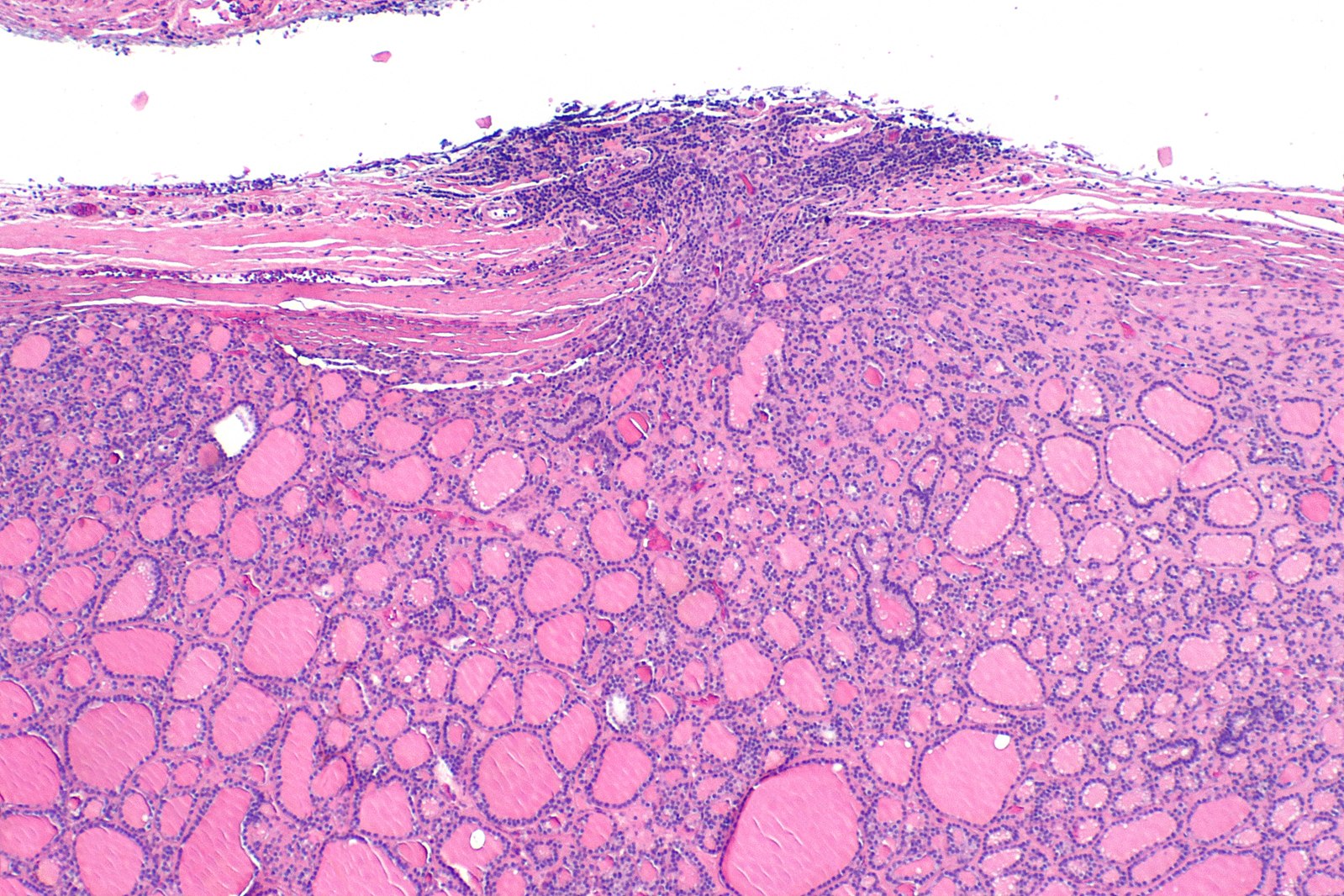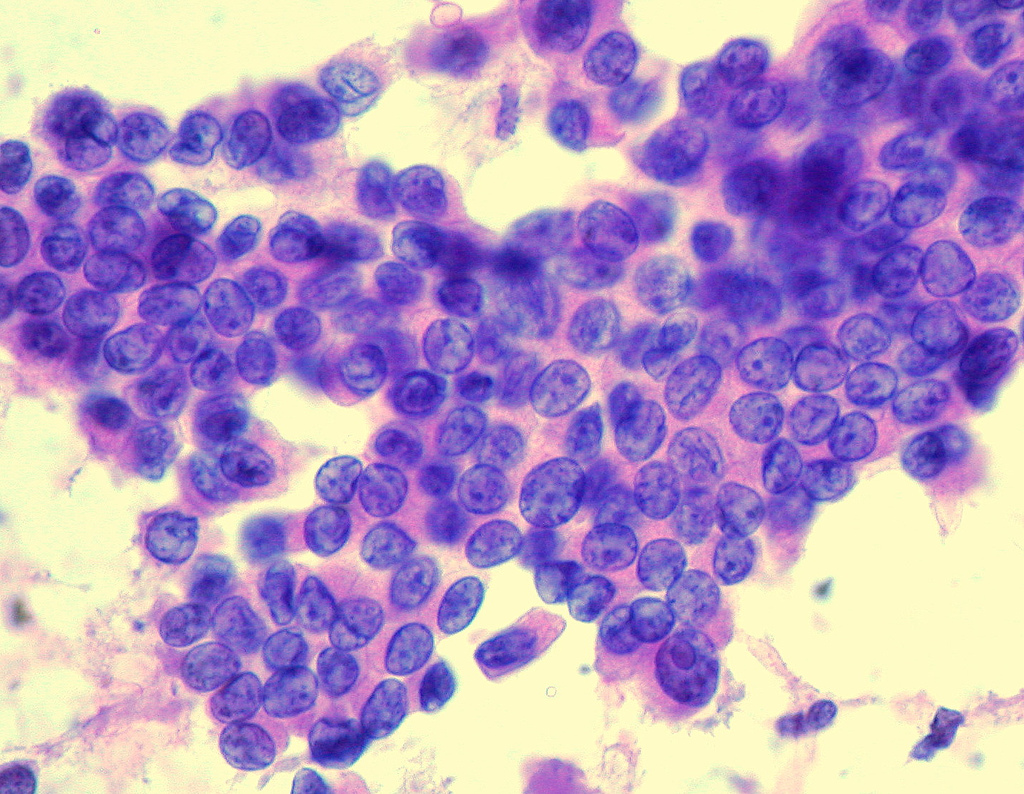Difference Between Follicular Thyroid Cancer and Papillary Thyroid Cancer
What is Follicular Thyroid Cancer and Papillary Thyroid Cancer?
Both follicular are papillary thyroid cancers are termed as differentiated thyroid cancer, meaning the malignancy looks and functions in some aspects like normal thyroid glands. Both grow slowly and account for nearly 90% of thyroid carcinoma’s and both are curable cancers. However, both have some differences.

Follicular Thyroid Cancer
Follicular thyroid carcinoma that is more aggressive in terms of malignancy intensity. It is rare and contributes to around fifteen percent of all carcinomas of thyroid. This cancer spreads to the lymph nodes in the neck and then other distant organs like lungs and bones and the initial symptoms include – changes in voice, pain in neck, increased hoarseness and difficulty in swallowing.

Papillary Thyroid Cancer
Papillary thyroid cancer is not comparable tumor with the superficial layer of the dermis raised into papillae and follicular structures that is characterized by overlaying cell’s genetic material (nuclei) that have a GGA (ground glass appearance or a shadowy pattern) and longitudinal long narrow channels with invaginations of cytoplasm into the nuclei.
Encapsulated and contained, deep narrow-mouthed depression or follicles, tall cell, a stack of columns in an epithelial layer (columnar-cell), clear cell and scatter pathological hardening of tissue (sclerosing) carcinomas are recognized as distinctively different histomorphologic phenotypes of a particular neoplasm (histologic variants); they are classified as papillary carcinomas because of their characteristics.
Difference between Follicular Thyroid Cancer and Papillary Thyroid Cancer
Definition
Follicular Thyroid Cancer
This type of thyroid cancer is not very common and is rare. It is typically a bit more aggressive (more malignant) than papillary thyroid cancer. This type of cancer occurs in people older than 50.
Papillary Thyroid Cancer
Papillary Thyroid Cancer is the most common form of cancers of the thyroid – and arises from the thyroid epithelial cells or thyrocytes, which produce and store triiodothyronine (T3) and thyroxine (T4) – the thyroid hormones. Cancer of papillary thyroid usually affects people aged thirty to fifty.
Tumor
Follicular Thyroid Cancer
The tumor is encapsulated
Papillary Thyroid Cancer
The tumor is unencapsulated and multicentric in twenty to eighty percent of patients.
Route of spread
Follicular Thyroid Cancer
Usually hematogenous route of spread
Papillary Thyroid Cancer
Usually lymphatic route of spread
Metastasis
Follicular Thyroid Cancer
Distant metastasis to occiput
Papillary Thyroid Cancer
Distant metastasis to lungs
Etiology/Risk factor
Follicular Thyroid Cancer
Insufficient Iodine intake, irradiation exposure and older age
Papillary Thyroid Cancer
Iodine excess
Characteristics
Follicular Thyroid Cancer
- Occurs between ages – 40 through sixty
- Females more common than males by 3 to 1 ratio
- Prognosis (the likely course of a medical condition) directly associated to tumor size [less than one cm (3/8 inch)]
- Related to radiation exposure on rare occasions
- Spread to lymph nodes is not common (~ twelve percent)
- Cancer spread to lungs or bones is not common, but definitely more common in comparison to the papillary cancer
- Curative possibility is high (near ninety five percent for small lesions in young patients), reduces with advanced age
- Invasion into the circulatory system (veins and arteries) within the endocrine gland (the thyroid gland) is common
Papillary Thyroid Cancer
- Occurs between ages – 30 through 50
- More common in women than men by three to one ratio
- Prognosis (the likely course of a medical condition) directly related to tumor size [less than one and a half cm (half an inch)]
- Accounts for eighty five percent of thyroid cancers
- X-ray exposure or radiation exposure can be causative factors
- Spread to lymph nodes of the neck present in up to fifty percent of cases
- Cancer spread to lungs or bones is very rare
- Curative possibility is very high (near hundred percent for small papillary cancers in young patients)
Prognosis factors
Follicular Thyroid Cancer
- Minimally invasive follicular carcinoma: very low long-term mortality
- Widely invasive: fifty percent long term mortality
- Poor prognostic characteristics – the size of the tumor (abnormal mass of tissue) size greater than four cm, cancer that has spread from the original tumor to distant lymph nodes – distant metastases, forty-five years of age or greater, large size, extensive vascular invasion (blood and/or lymph vessel invasion (LBVI), extrathyroidal extension (extension of the primary tumor outside of the thyroid capsule and invasion into the surrounding structures)
Papillary Thyroid Cancer
- Overall excellent prognosis with a life expectancy similar to general population: five – year, ten year and twenty – year survival is ninety six percent, ninety three percent and greater than ninety percent respectively
- Disease specific survival is close to hundred percent if under age twenty
- Regional nodal involvement does NOT affect likely outcome
- Five- twenty percent have local relapses, ten – fifteen percent have distant metastases (cancer that has spread from the original tumor to distant lymph nodes), (lung, bones, CNS)
- Unfavorable prognostic Indication of a disease recognized by the ATA – American Thyroid Association Management Guidelines include
- Intermediate risk: tall cell / hobnail / uniform ovoid / elongated nuclei perpendicular to basement membrane – columnar cell variant (PTC‐CCV), vascular invasion ((VI), which is known as blood and/or lymph vessel invasion (LBVI), pN1 disease with greater than five positive small glands that filter lymph (lymph nodes) and the largest metastatic focus smaller than three cm in greatest dimension, microscopic extrathyroidal extension (perithyroidal fibro adipose tissue)
- Increased risk: gross extrathyroidal extension (ETE – extension of the primary tumor outside of the thyroid capsule – larynx, vasculature, esophagus and beyond), incomplete tumor resection (poor prognostic factors in thyroid cancer patients), distant metastasis (cancer that has spread from the original tumor to distant lymph nodes), pN1 with a metastatic focus ≥ 3 cm in largest dimension
- Elder age at diagnosis (≥ fifty-five years) is a poor prognostic factor
- Succession to poorly differentiated thyroid carcinoma or (ATC) – anaplastic thyroid carcinoma characterized by growth of cells that is uncontrollable in the thyroid gland and infers a poor prognosis
Summary
The points of difference between Follicular Thyroid Cancer and Papillary Thyroid Cancer have been summarized as below:
Follicular Thyroid Cancer VS Papillary Thyroid Cancer

- Difference Between Global Warming and Greenhouse Effect - May 18, 2024
- Difference Between Vaccination and Immunization - March 3, 2024
- Difference Between Selective Mutism and Autism - February 25, 2024
Search DifferenceBetween.net :
Leave a Response
References :
[0]Aboelnaga, E. M., & Ahmed, R. A. (2015). Difference between papillary and follicular thyroid carcinoma outcomes: an experience from Egyptian institution. Cancer biology & medicine, 12(1), 53.
[1]Franssila, K. O. (1973). Is the differentiation between papillary and follicular thyroid carcinoma valid? Cancer, 32(4), 853-864.
[2]Henke, L. E., Pfeifer, J. D., Baranski, T. J., DeWees, T., & Grigsby, P. W. (2018). Long-term outcomes of follicular variant vs classic papillary thyroid carcinoma. Endocrine connections, 7(12), 1226-1235.
[3]Image credit: https://commons.wikimedia.org/wiki/File:Follicular_thyroid_carcinoma_--_low_mag.jpg
[4]Image credit: https://commons.wikimedia.org/wiki/File:Papillary_Carcinoma_of_the_Thyroid.jpg
